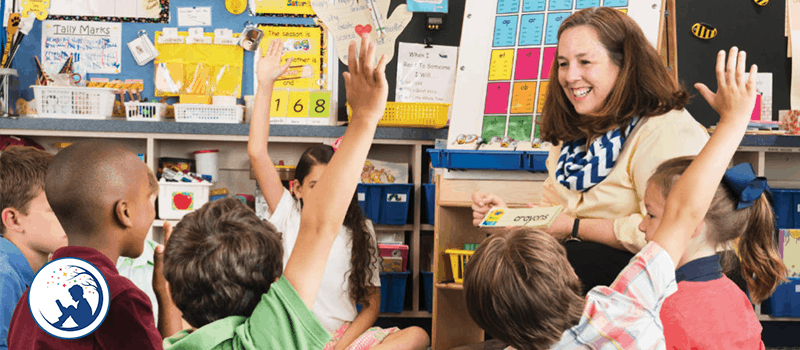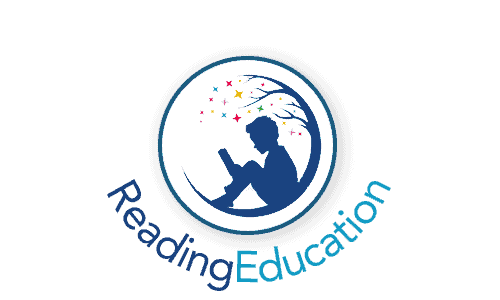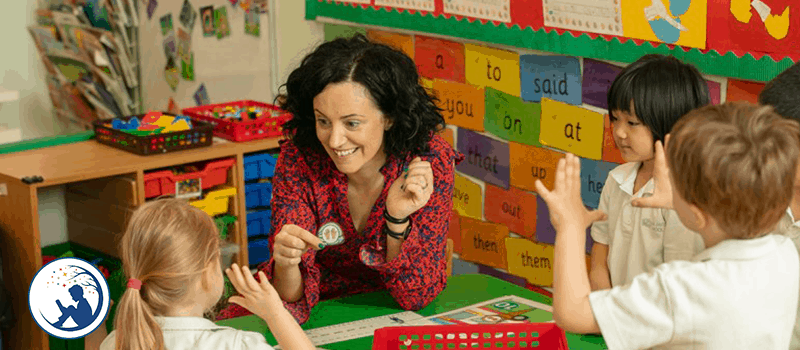While there are a multitude of learning milestones throughout a kindergartener’s early development, there are none so crucial as learning to read. Getting this element of early learning right is vital to ensuring a child becomes well versed in this key skill from an early age. However, like with most learning-related tasks, this is often easier said than done. The critical question, therefore, remains: What strategies should be employed to facilitate the most effective and rewarding process for kindergarteners learning to read?
In today’s article, we will answer this question and examine a plethora of strategies, methods, and techniques that can be utilised to make learning to read a more efficacious and speedier process. Although there is no one-size-fits-all approach to learning to read given that children of kindergarten age will develop at differing rates, the strategies outlined in this guide should provide a broad enough spectrum of ideas to accommodate all kids, regardless of their current reading abilities.
Improving Kindergarten Reading Skills

In the early stages of learning to read, children will begin to grasp such skills as letter and sight word recognition, phonemic awareness, blending, and decoding. However, to take reading skills to the next level, it is essential to go further than merely using worksheets and the like; instead, adopting a hands-on approach through the application of a wide range of targeted techniques, games, and activities is the most effective route forward. Let’s take a look at some of these ‘strategies’ in greater detail. Although the ideas listed below are certainly not exhaustive (there are many ways to skin a cat, after all), they will undoubtedly furnish you with a wide array of mechanisms via which reading skills can be improved.
Begin With A Rock-Solid Foundation
Learning to read and gaining strong comprehension skills successfully requires a robust foundation of phonemic awareness; without the latter, the former two skills cannot exist in their fullest capacity. This involves more than the simple ability to be able to recite the alphabet; sainted, kindergarteners must understand and learn the sound(s) that every single letter makes. In addition, it also includes the ability to blend individual sounds together, segregate beginning and ending sounds, recognise words that begin or end with the same sound, and break down words into in separate, individual sounds.
When learning the above, children require precise phonics instruction that helps them to build on phonemic awareness and teaches them the correlation between (groups of) letters and sounds. While there are several ways to do this, it is apparent that most effective phonics instruction typically follows a particular sequence, starting with the sounds of vowels and consonants, gradually building up to blends of two and three letters, plural words, double consonants, and digraphs (th, sh, ch, etc.).
Kindergarten children should begin by learning to recognise common sight words.
Reading Games Are Integral
As we alluded to above, games are a fundamental piece of the learning-to-read jigsaw, not only because they’re effective learning devices but also because they’re fun! Hands-on activities that enhance comprehension and phonemic awareness skills are a must. Here are a few examples:
Dice Roll Families: For this games, you’ll need to two blank dice. One the first dice, write consonants, choosing the most popular letters words begin with – s, t, m, n, p, r for example. On the second dice, write double-letter combinations that are vowels followed by consonants, i.e. word-ending sounds, such as in, et, op, at for example. You’re now ready to start the game.
To play, ask your little one to roll the first dice followed by the second dice. Once they have rolled the dice, invite them to read the word presented to them. Sometimes a word that doesn’t exist may be shown, but that’s completely fine. Even nonsense words provide your kindergartener with the opportunity to practise blending letter sounds, not to mention helping them to recognise real words from nonsense words.
I Spy With My Little Eye: A classic game that we all played and loved as kids ourselves. However, this isn’t regular I Spy; this is CVC I Spy. CVC stands for consonant-vowel-consonant, and the aim of this version of I Spy is to invite your child to look through their books (and other reading materials) and find CVC or sight words. Upon finding one, they must report back to you and read the word.
Acting: Ok, this isn’t a game per se, but it is a lot of fun and is highly beneficial for fostering reading skills. When reading a book with your child, ask them to act out a specific scene or passage from said book. By doing this, you’ll add meaning to the words and phrases, helping your child to understand what certain words and sentences mean.
Sight Word Bingo: Another classic game that can be used to enhance reading skills. The format of sight word bingo is exactly the same as regular bingo, except numbers are replaced by CVC words. Create various cards with different CVC or sight words on them, give one to each player along with some markers to cross off their words, and you’re ready to play.
Choose The Right Books
One area that often puzzles parents is choosing the right books for their child. While there is no explicit right or wrong answer to this, there are several factors to keeping in mind when buying books for your little ones:
The Rule of Five: The ‘Rule of Five’ can help determine whether a book is too hard for a child. If your child makes five or more errors when reading a single page, the book is clearly too hard for them at their stage of reading development. If they make around four errors per page, it is worth persevering – provided that you’re there to assist if required. A book that troubles your child two or three errors per page is generally deemed as being the right level for them.
Re-reading: Reading a book multiple times over is sometimes frowned upon, but in reality, it’s absolutely fine. Although some may view it as a child merely memorising a specific text, it can actually help to build word recognition, fluency, and vocabulary.
Repetitive Text: Like re-reading, there are some who aren’t fans of books that contain repetitive text; however, reading books that contain repetitive text can help to enhance your child’s reading comprehension.
Remember, when choosing books for your child, always try to opt for books that will interest them. Some children prefer fiction, whilst others prefer non-fiction. Always keep tabs on what interests, likes, and hobbies your child has as this will ensure they will be excited to read the books you buy for them.
Promote Good Reading Habits
An essential part of the learning-to-read process is for children to see recognise that both their parents and teachers place value on reading. Teachers will typically do this by putting aside 10 to 20 minutes each day for the purpose of individual silent reading. During this short time period, bother students, and teachers select a book to read to themselves. This can also be achieved at home by setting aside the same amount of time for silent reading of an evening.
Additionally, both teachers and parents should read to their students/children on a frequent basis. This allows your child to get to grips with how reading rate and word emphasis (often referred to as voice inflection) plays a substantial role in overall reading fluency. When reading to your child, always choose books that are slightly above their reading level as this will introduce them to a broader range of words and help to broaden their vocabulary. Bedtimes stories are a perfect time for this.
Ask Them Questions
Reading comprehension ability can be improved by asking your child questions before, during, and after reading. For example, before reading a specific book, invite your child to look at the title, front cover, and pictures and ask them what they think the book is about/what they think will happen. During reading, ask your child questions about what is happening, what they think might occur next in the story, and what they would do if they were in the main character’s shoes. Once reading time has finished, ask your child how the story made them feel, why they think the story ended the way it did, and if they have any ideas for an alternative ending.
Making Connections
Making connections is a highly effective method for enhancing your child’s reading comprehension. Always provide them with a foundation for the books they’re reading. If the topic of the book is unfamiliar to them, discuss the subject with them or watch a video on the theme of the text. Furthermore, it is essential to help children connect their life experiences with stories they’ve read or are reading. For example, if you’ve just got a new puppy or kitten, talk about how this makes your child feel and choose a book that is related to getting a new pet. Making connections between words and feelings is a vitally important foundation for comprehension and overall reading skills.
Teach Them To Teach Themselves
Always teach your child to help themselves when reading. If they’re stuck, it’s important for them to exhaust all avenues before asking for help. For example, if they’re struggling to understand what a certain phrase, sentence, or paragraph means, tell them to re-read the sentence/phrase/paragraph, use the pictures for clues, think about what has happened before, and read what happens next. Don’t forget the ‘Rule of Five’. If your child is struggling to understand what is happening, the book might be too high a level for them.
Building Vocabulary
Expanding vocabulary goes hand-in-hand with improving reading compression; therefore, it is crucial to give your child the confidence to build their reading skills by looking up the meaning of unfamiliar words in advance, so they don’t lose the meaning of the text or story they’re reading.
Encourage them to infer the meanings of new words by using the context of the text or story. For example, if your child reads, “The tiny bug goes through the little hole”, they might be unfamiliar with the word ‘tiny’ yet recognise the word ‘little’. Teach your child to ask themselves questions that will help them to solve the problem themselves. In the case of the aforementioned sentence, they could ask questions such as, “What is able to go through a little hole? Would it be something that is big or small?”. By reading words in context, children will garner the ability to infer that the word ’tiny’ must mean the same as or very similar to the word ‘little’.
Visualisation
The last part of the jigsaw is visualisation, which involves encouraging your child to build mental images when reading books and stories. Ask your child to draw. Picture or series of pictures that depict what is happening in the story, what a character might be thinking or feeling, or what they envisage the world they’re reading about to look like. Always encourage the use of all five senses to help immerse them into what they’re reading as fully as possible. Envisioning what is happening and how characters are feeling is both a fun and effective way to boost your child’s reading comprehension skills.
Reading Strategies For Kindergarten: A Summary
As stated in the introduction to this piece, the above strategies certainly aren’t exhaustive; however, they will provide you with an actionable set of methods and techniques that will facilitate faster, more enjoyable, and ultimately, successful learning. Here are the key takeaway points:
– Create a solid foundation for comprehension by giving explicit phonics instruction and fortify newly acquired knowledge through fun games and activities.
– Repetition reinforces comprehension. Opt for books that contain both a topic or topics your child will enjoy as well as repetitive text.
– When reading with your child, help build connections by asking them questions about what you’re reading and to visualise what is happening.

